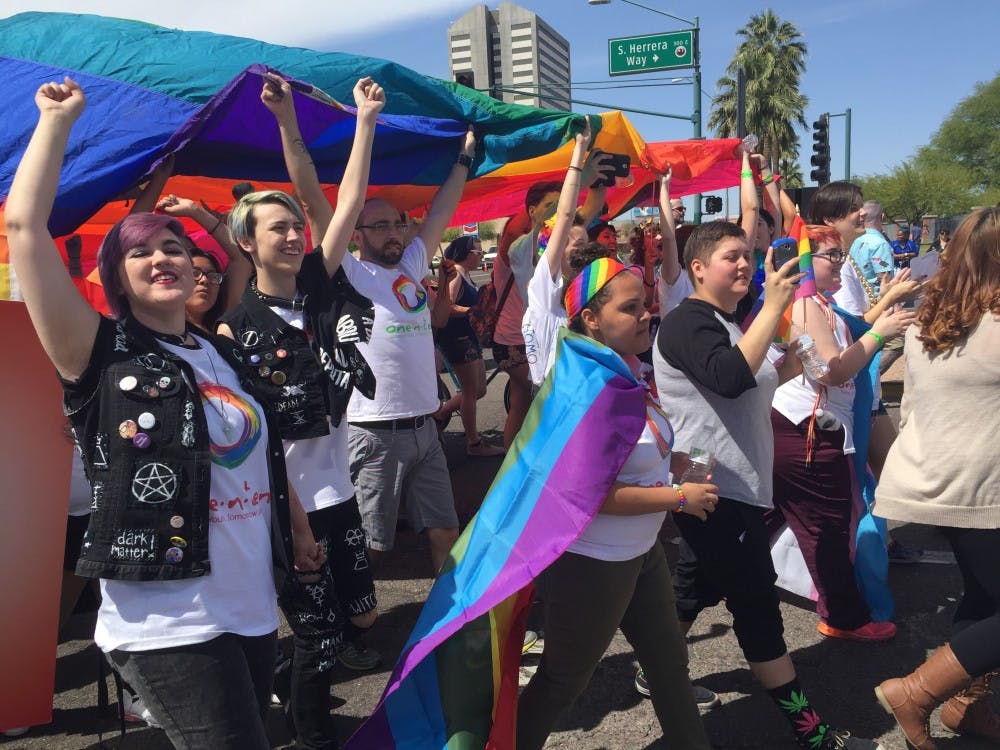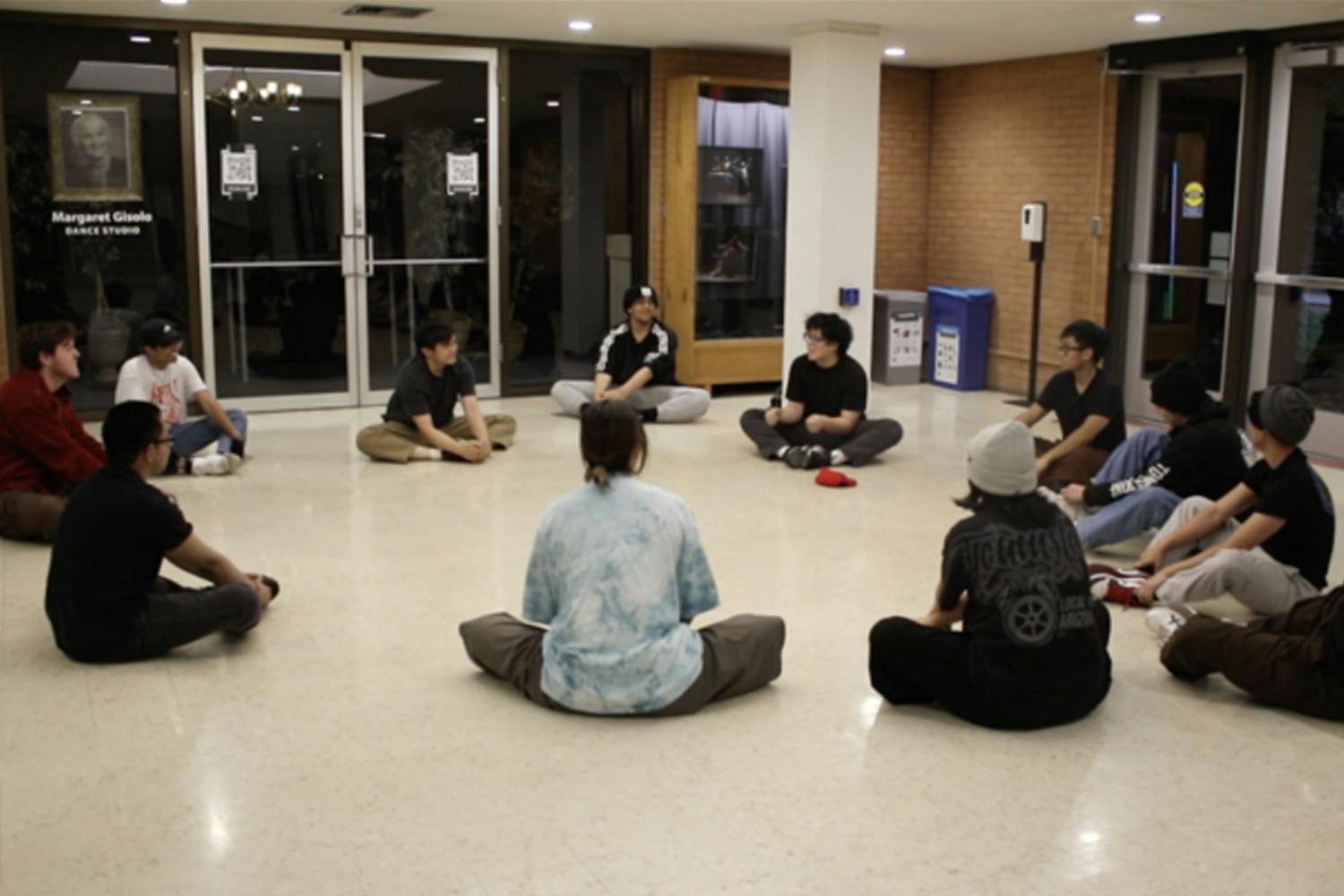Sounds of laughter fill the air like the jingle of little bells at Christmas time. Loud and vivacious students celebrate the homecoming of a new year and semester at ASU. Underneath this rancor, there is a culture of students who are celebrating something larger than themselves as loudly as they can: LGBTQ equality, visibility and representation.
From Oct. 15-22, while various parts of the ASU student body celebrated homecoming in various ways with varying degrees of exhalation, the LGBTQ community was celebrating Pride Week from Oct. 12-23. While Pride Week may have lasted longer than homecoming, it wasn’t all that noticed.
In the 11 days that Pride Week went on, there were panels and events that included every spectrum of the LGBTQ community. There were poolside celebrations put on through the ASU’s Rainbow Coalition and Sun Devil Fitness Centers, an LGBT Certificate Program informational lunch and sex education, are just trying to seek their place in it.
In general, college itself is a place where students come to find their place in the world and the people who fit in that space. As such, college is often labeled as a non-judgment zone where people can live their truth. As the national conversation of speech on campus continuous, LGBTQ voices on campus are still trying to gain volume. For ASU alumna, Alexis Jones who is an openly lesbian woman, that’s exactly what the experience was.
“In college, for some reason, you got this sense that everyone was pretty open about everything,” Jones says. “Even if you weren’t open to it, I mean learning and getting educated and everything, it kind of opened everyone else’s mind. I guess it forced them to be open to it.”
From support clubs and special interest groups to sororities and fraternities, ASU includes a plethora of spaces for the LGBTQ community to get involved. It also has no shortage of faculty who have the experience and knowledge to connect students seeking inclusion.
“The only reasons I heard of LGBT events was because I was in classes that were about LGBT experiences,” Jones says. “I would have never known that Laverne Cox was going to be speaking at our school had I not been in a class that incorporated LGBT relations.”
At a university there can be difficulty finding events that celebrate parts of yourself you expressed openly at college, be that LGBTQ related or not. It is especially difficult when no one knows about those events.
Julia Himberg, an assistant professor of film and media studies at ASU, is the advisor to the LGBTQ Support Club and Gamma Rho Lambda Sorority. She teaches a class, LGBTV, which focuses on LGBTQ characters in the media and how their representations impact our society and societal norms.
Her research and teachings at ASU primarily focus on the relationships between media and sexuality, gender, consumer culture and advertising.
When talking with Himberg about her thoughts on LGBTQ representation and promotion among the ASU community she said that while it has a variety of different ways to be inclusive of the LGBTQ community, it lacks in other areas.
“I think ASU has some work to do in terms of increasing that visibility and also kind of embracing a university-wide sense of pride,” she says. “I think it can become especially important as we move into this period now with this election.”
Queer culture on campuses exists throughout the country and a lot of them have made great strides to ensure their students feel they are represented in their schools. However, since the legalization of same-sex marriage, there has been a decline in people rallying for LGBTQ issues.
An example of this lack of attention is the Orlando massacre in June 2016. After 50 people were killed at a gay club in Orlando, people talked more about LGBTQ issues than they had in a year since same-sex marriage won. Almost six months later, there hadn’t been as much news coverage or talk about LGBTQ rights, until Trump’s recent victory becoming President.
There are ways that ASU can improve upon what the nation was slacking at. One of those ways, according to Himberg, is through collaboration among student lead organizations.
“I think it’s a large place that makes finding these groups difficult,” Himberg says. “They’re not unified. Gamma Rho Lambda is off doing its thing and the LGBTQ Support Club is off doing its thing, but there isn’t a lot of overlap or collaboration between them. That, I think, that would make the visibility better.”
Even though the presence of the LGBTQ community and openness to it can be felt at ASU, the strides ASU’s made to promote it and include it in the larger student body, has largely been left on the shoulders of the students.
“For the most part this has been a student lead effort,” Himberg says “Which means that students are busy and the nature of their lives are such that it is difficult.”
While ASU has always been an open and affirming community, if not be held accountable for it’s lack of participation in LGBTQ issues, what sorts of issues will the university face if this continues?
“Nothing but good can come out from ASU being more involved,” Jones says.
Reach the reporter at Owen.Baldner@asu.edu or follow @Baldnerwin on Twitter.
Like State Press Magazine on Facebook and follow @statepressmag on Twitter.





